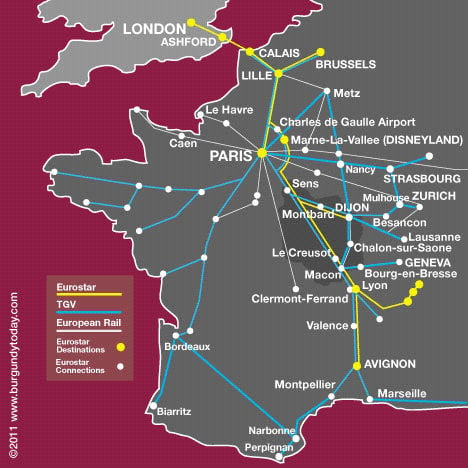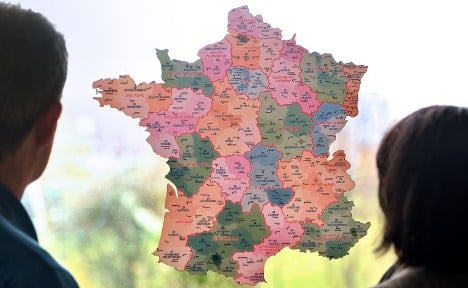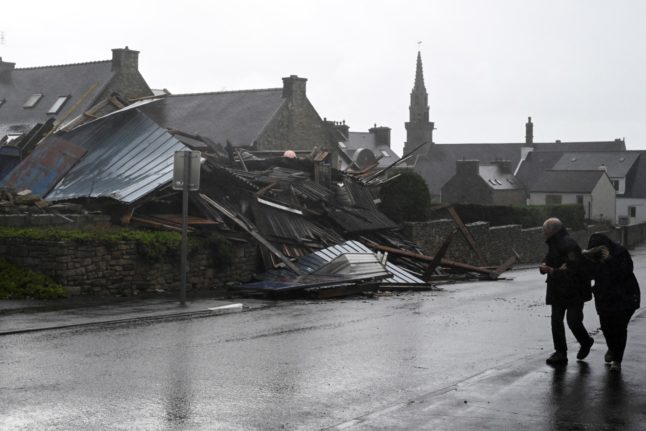Which city in France is the best for foreigners to live in, when it comes to all-round quality of life?
By our calculations it was Rennes, in Brittany. Before you ask where Paris came, the answer is fifth.
The full list of categories we looked at were: International air links, rail links, average monthly rent, unemployment rate, hours of annual sunshine, nightlife, distance to the beach, number of Michelin restaurants, best or easiest accent to understand, number of cultural sites/activities, greenest city, air quality, percentage of singles in the city, number of regional or national parks within two hours drive, and quality of public transport.
Full rankings:
Rennes: 128
Nantes: 122
Bordeaux: 120
Toulouse: 115
Paris: 114
Lyon: 111
Montpellier: 107
Nice: 104
Grenoble: 102
Lille: 101
Marseille: 92
Clermont-Ferrand: 91
Strasbourg: 87
For each category we looked at an existing study and ranked the cities from 13 for the best down to one for the worst.
In some cases there were ties so the cities received the same points.
1. Air links
Number of international flight destinations
(All official airport websites)
13: Paris: 312, 2 international airports, plus Beauvais
12: Bordeaux: 126
11: Nantes: 90
10: Lyon: 84
9: Nice: 75
8: Toulouse: 66
7: Marseille: 64
6: Rennes: 59
5: Lille: 33
4: Montpellier: 20
3: Strasbourg: 13
2: Grenoble: 11
1: Clermont-Ferrand: 5 (no English-speaking countries)
2. Rail links
TGV line, journey time/number of trains to Paris daily
(Worked out from the SNCF website)
13: Paris: Obviously Paris has the best rail links in the country, serving national and international destinations.
12: Lille: TGV, 1 hr to Paris, 24 per day
11: Lyon: TGV, 2hrs to Paris, 29 per day
10: Rennes: TGV , 2 hrs 15 mins to Paris, 26 per day
9: Nantes: TGV, 2 hrs 15 mins to Paris, 22 per day
8: Strasbourg: TGV, 2.5 hrs to Paris, 16 per day
7: Bordeaux: TGV, 3 hrs 15 mins to Paris, 33 per day
6: Marseille: TGV, 3.5 hrs to Paris, 21 per day
5: Grenoble: TGV, 3 hrs to Paris, 9 per day
4: Montpellier: TGV, 3.5 hrs to Paris, 16 per day
3: Nice: TGV, 5.5 hrs to Paris, 12 per day
2: Toulouse: TGV, around 6 hours to Paris, 14 per day
1: Clermont-Ferrand: no TGV, 3.5 hrs to Paris, 7 regular trains per day

3. Average Monthly Rent
From the site: http://blog.locservice.fr/observatoire-locservice-2016-les-principaux-chiffres-du-marche-locatif-francais-3037.html
The average monthly rental for a French home is €624 ($678), according to online renting portal LocService.
The stats are based on the 65,500 homes rented out across the country via the website during 2015. Using the same site, here is cheapest to most expensive.
13: Clermont-Ferrand – €462
12: Rennes – €470
11: Nantes – €519
10: Grenoble – €533
9: Lille – €554
8: Toulouse – €581
7: Strasbourg – €591
6: Montpellier – €595
5: Bordeaux – €629
4: Marseille – €630
3: Lyon – €654
2: Nice – €685
1: Paris: €1,014
4. Best place to work/unemployment rate
Site: www.insee.fr
Unemployment rate by city with data from last three months of 2015
13: Rennes: 8.0 percent
12: Grenoble: 8.3 percent
11: Nantes: 8.4 percent
10: Clermont-Ferrand – 8.7 percent
9: Paris: 8.8 percent
8. Lyon: 9.2 percent
7: Bordeaux: 10 percent
6: Strasbourg: 10.3 percent
6: Toulouse: 10.3 percent
4: Nice 10.6 percent
3: Lille: 10.9 percent
2: Marseille: 12.6 percent
1: Montpellier: 13.2 percent
5. Hours of sunshine (best to worst)
https://www.currentresults.com/Weather/France/annual-days-of-sunshine.php
13: Marseille – 2,858
12: Nice – 2,724
11: Montpellier – 2,668
10: Grenoble – 2,066
9: Bordeaux – 2,035
8: Toulouse – 2,031
7: Lyon -2,002
6: Clermont-Ferrand – 1,913
5: Nantes – 1,791
4: Rennes – 1,717
3: Strasbourg – 1,693
2: Paris – 1,662
1: Lille – 1,617
6. Best nightlife
Study by FranceLive.fr, based on bars in PagesJaunes.fr, Number of inhabitants per bar
13: Clermont-Ferrand: 1401
12: Lille: 1440
11: Rennes: 1670
10: Bordeaux: 1672
9: Grenoble: 1691
8: Nantes: 1727
7: Lyon: 1767
6: Paris: 1964
5: Montpellier: 2237
4: Strasbourg: 2405
3: Nice: 2454
2: Marseille: 2492
1: Toulouse: 2614
7. Kilometres to the coast (best to worst)
13: Nice – 0 km (one of two coastal cities, but much better beaches)
12: Marseille – 0 km (bad beaches)
11: Montpellier – 8 km to the south
10: Nantes – 43km to Pornic on the west coast.
9: Bordeaux – 50 km to the west coast
8: Rennes – 54 km to Cherrueix on the north coast
7: Lille – 62 km to Bray-Dunes on north coast (special mention: 61 km to De Panne, in Belgium!)
6: Toulouse – 140 km to the south
5: Paris: 150 km to north coast, Dieppe
4: Grenoble – 209 km to Cannes, south coast
3: Clermont-Ferrand – 259 km to the south coast
2: Lyon – 260 km to the south coast
1: Strasbourg – 488 km to the northern coast
8. Number of Michelin-starred restaurants
http://restaurant.michelin.fr/
13: Paris: 92
12: Lyon: 15
11: Marseille: 6
11: Strasbourg: 6
9: Clermont-Ferrand: 4
9: Nice: 4
7: Toulouse: 3
7: Bordeaux: 3
5: Montpellier: 2
4: Nantes: 1
4: Lille: 1
4: Rennes: 1
1: Grenoble: 0
9. Best accent
We worked this out by a combination of two studies or rankings that we accept are by no means watertight.
http://www.topito.com/top-accents-regional-sexy-chti
13: Toulouse – First on Topito (12 percent), 70.2 percent on Parship thought charming
12: Nice – Provencal accent scored second on Topito (10 percent)
11: Nantes – Breton accent scored third on topito breton, and 26 percent on Parship found it “intelligent”
11: Rennes- Breton accent scored third on topito breton, and 26 percent on Parship found it “intelligent”
9: Paris – Fourth on Topito (8 percent)
8: Clermont-Ferrand (No info from the 2 studies) Neutral
8: Bordeaux (No info from the 2 studies) Neutral
8: Grenoble (No info from the 2 studies) Neutral
8: Montpellier (No info from the 2 studies) Similar to Marseille?
4: Strasbourg – Alsacien, 8th
3: Lyon – ninth topito
2: Lille 5th topito, 74 percent find Chti funny
1: Marseille 72.2 of Parship thought it was funny.
10. Cultural sites and activities
Trip Advisor “Sights and Landmarks” + Museums
Museums, churches, cathedrals, sacred/religious sites, historic sites, monuments/statues, cemeteries, castles
https://www.tripadvisor.com/Attractions-g187147-Activities-c47-Paris_Ile_de_France.html
13: Paris: 628
12: Nice: 87
11: Marseille: 83
10: Lyon: 80
9: Bordeaux: 71
8: Strasbourg: 69
7: Toulouse: 54
6: Lille: 49
5: Montpellier: 37
4: Nantes: 36
3: Grenoble: 23
2: Rennes: 20
2: Clermont-Ferrand: 20
11. Greenest city
Green space per inhabitant. Green space data from tourism websites, INSEE population data
On average, France’s big cities have:
– 31 m² of green space per inhabitant
– 11 trees per hectare (but only 0.2 trees per inhabitant)
– Average green space budget per inhabitant: €47
– on average, invest 1.2 % of budget on green space
13: Rennes: 8,680,000 m², 207,178 inhabitants, 42 m²
12: Nantes: 34 m²
11: Bordeaux: 25 m²
10: Toulouse: 7,600,000 m², 441,802 inhabitants, 17 m²
9: Grenoble: 2,350,000 m², 155,637 inhabitants, 15 m²
9: Strasbourg: 4,000,000 m², 271,782 inhabitants, 15 m²
9: Montpellier: 3,930,000 m², 257,351 inhabitants, 15 m²
6: Lille: 12 m²
5: Clermont-Ferrand: 1,500,000 m², 139,860 inhabitants, 11 m²
4: Lyon: 4,360,000 m², 484,344 inhabitants, 9 m²
4: Nice: 3,000,000 m², 343 304 inhabitants, 9 m²
2: Marseille: 6,400,000 m², 850,726 inhabitants, 7.5 m²
1: Paris: 9,950,000 m², 2,243,833 inhabitants, 4 m²
12. Proximity to regional and national parks
Google Maps – within 2 hour’s drive
13: Paris: 6: Haute Vallée Chevreuse, Oise Pays-de-France, Vexin Francais, Gatinais Francais, Montagne de Reims, Perche
13: Lyon: 6: Pilat, Chartreuse, Massif des Bauges, Livradois Forez, Vercors, Ecrins
13: Montpellier: 6: Cevennes, Grands Causses, Camargue, Haut Languedoc, Narbonnaise, Alpilles
10: Grenoble: 5: Chartreuse, Écrins, Vercors, Vanoise, Pilat
10: Marseille: 5: Calanques, Verdon, Luberon, Alpilles, Camargue
8: Clermont-Ferrand: 4: Volcans d’Auvergne, Livradois Foret, Millevaches, Cevennes
8: Toulouse: 4: Haute Languedoc, Causses de Quercy, Pyrenées Ariegeoises, Narbonnaise
8: Lille: 4: Scarpe-Escaut, Avesnois, Caps et Marais, Oise Pays de France
5: Strasbourg: 3: Ballons des Vosges, Vosges du Nord, Lorraine
4: Nantes: 2: Briere, Loire Anjou Touraine,
4: Nice: 2: Mercantour, Verdon
4: Rennes: 2: Brieres, Normandie-Maine
1: Bordeaux: 1: Parc naturel régional des Landes de Gascogne
13. Air Quality
http://www.terraeco.net/IMG/pdf/Terraeco-classement-villes-durables-2014.pdf
13: Nice: 5 (ranking)
13: Montpellier: 5
11: Toulouse: 7
10: Strasbourg: 11
9: Nantes: 15
8: Rennes: 18
7: Clermont-Ferrand: 19
6: Bordeaux: 21
5: Marseille: 22
4: Paris: 26
3: Grenoble: 28
2: Lyon: 29
1: Lille: 30
14. Most singles
13: Lille
12: Rennes
11: Toulouse
10: Bordeaux
9: Montpellier
8: Grenoble
7: Nantes
6: Lyon
5: Paris
4: Clermont-Ferrand
3: Strasbourg
2: Nice
2: Marseille
15. Best public transport
http://www.changerdeville.fr/ou-vivre/facilite-de-deplacement-palmares-des-villes-1026.html
Unfortunately Paris was not included in the study so we gave the city the average score, based on the fact the transport is clearly good, but is beset with problems. Just ask commuters on the RER trains. Once the Grand Paris comes into existence then the rankings may change.
13: Lyon
12: Lille
11: Toulouse
10: Rennes
9: Bordeaux
8: Grenoble
7: Paris
6: Nantes
5: Strasbourg
4: Marseille
3:Montpellier
2: Nice
1: Clermont-Ferrand



 Please whitelist us to continue reading.
Please whitelist us to continue reading.
Member comments